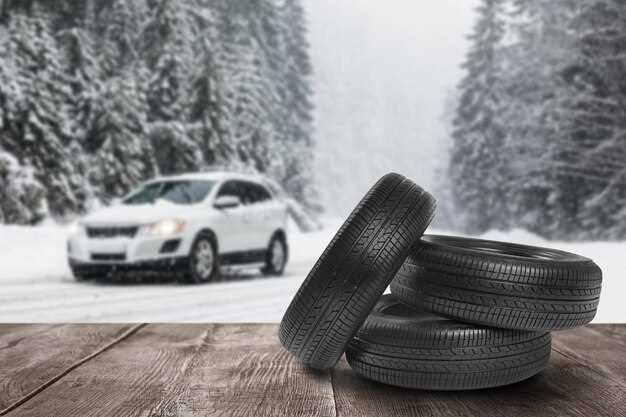
When it comes to tire selection, understanding the unique features of winter and all-season tires is essential for ensuring safety and optimal performance on the road. Each type of tire is designed with specific conditions in mind, and making the right choice can significantly affect your driving experience, especially in challenging weather.
Winter tires are engineered to perform exceptionally well in cold, snowy, and icy conditions. Their unique rubber compounds remain flexible at low temperatures, providing enhanced grip and traction. Additionally, their tread patterns are designed with deeper grooves and biting edges to facilitate better handling on slippery surfaces, ensuring that your vehicle remains stable and controllable when it matters most.
On the other hand, all-season tires offer a versatile solution that aims to balance performance in various weather conditions throughout the year. While they can handle light snow and mild winter conditions, they often lack the specialized traction that winter tires provide. Understanding these key differences will guide you in making an informed decision about which tire type is best suited for your driving needs and environment.
Performance Comparison in Different Weather Conditions

When it comes to selecting the right tires for your vehicle, understanding the performance differences in various weather conditions is crucial. All-season tires are designed to provide a balanced performance across a range of conditions, while winter tires are specifically engineered for optimal grip and handling in harsh, cold environments.
In wet conditions, all-season tires perform adequately, but winter tires excel due to their specialized tread patterns and rubber compounds. Winter tires often feature deeper grooves and sipes that enhance water drainage, reducing hydroplaning risks. This increased traction allows for better braking and cornering on icy or snowy surfaces.
When it comes to snow, winter tires significantly outperform all-season options. The softer rubber of winter tires remains pliable in low temperatures, providing better grip. Their unique tread design is optimized for snow accumulation, ensuring that the tires maintain contact with the road. In contrast, all-season tires can harden in cold weather, leading to reduced traction and longer stopping distances.
In dry conditions, all-season tires typically provide a more comfortable ride with lower rolling resistance, which can contribute to improved fuel efficiency. However, winter tires can still perform well on dry roads when conditions are not extreme, though they may sacrifice some stability and handling. The trade-off often comes down to the specific performance needs and climate of the driver’s location.
Overall, the choice between all-season and winter tires boils down to the predominant weather conditions you face. For regions with severe winters and consistent snowfall, winter tires are essential for maintaining safety and performance. In contrast, all-season tires are suitable for moderate climates with mixed weather patterns, offering flexibility but not the same level of performance in extreme conditions.
Tread Design Variations and Their Impact on Traction

Tread design plays a crucial role in the performance of tires, particularly when comparing all-season and winter tires. The patterns carved into the tire’s surface directly influence how well the tire grips the road under various conditions. All-season tires typically feature a symmetrical tread design with fewer and shallower grooves, which is optimized for a balance of performance across different weather. This design allows for adequate traction in mild winter conditions but lacks the specialized features necessary for severe weather performance.
In contrast, winter tires are engineered with aggressive tread patterns that include deep grooves and unique sipes. These features are specifically designed to enhance traction on snow and ice. The deeper tread channels facilitate effective water evacuation, minimizing hydroplaning risk and improving grip in slushy conditions. Additionally, the intricate siping pattern increases the biting edges on the surface of the tire, which is essential for maintaining control on slippery roads.
The compounds used in winter tires also contribute to their performance. They remain pliable in low temperatures, ensuring better contact with the road surface compared to the harder rubber commonly found in all-season tires. This flexibility, combined with a more nuanced tread design, allows winter tires to perform optimally in freezing conditions, providing drivers with a significant safety advantage during the colder months.
Ultimately, the differences in tread design between all-season and winter tires can dramatically affect traction. Choosing the appropriate tire for specific driving conditions is essential for safe and effective driving, particularly in regions prone to harsh winter weather. Understanding these variations can help drivers make informed decisions about their tire selection.
Cost Considerations: Long-Term Savings vs Initial Investment
When choosing between all-season and winter tires, one of the most critical factors to consider is the cost. This can be broken down into initial investment and long-term savings, which ultimately affects your budget and vehicle performance.
Initial costs can vary significantly between all-season and winter tires:
- All-season tires are generally less expensive upfront. They serve multiple functions, making them an attractive option for drivers in moderate climates.
- Winter tires typically have a higher purchase price due to their advanced materials and specialized tread designs for superior traction on snow and ice.
Despite the higher initial cost, investing in winter tires may lead to significant long-term savings:
- Enhanced safety during winter conditions allows for better control and shorter stopping distances, potentially reducing the risk of accidents and associated repair costs.
- Winter tires provide improved fuel efficiency during colder months, as they are designed to maintain optimal performance in low temperatures.
- Using dedicated winter tires can extend the lifespan of all-season tires, as they won’t endure wear from harsh winter conditions.
In contrast, all-season tires might seem economical at first but can lead to higher long-term costs:
- Inadequate performance during severe winter conditions can result in accidents, leading to costly repairs and insurance claims.
- All-season tires may wear out faster in harsh weather, leading to a more frequent replacement cycle.
Ultimately, the decision rests on evaluating your driving conditions, climate, and budget considerations. While the initial investment for winter tires is higher, the potential for long-term savings through enhanced safety and durability can make them a worthwhile expenditure for those living in consistently cold climates.

